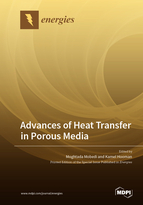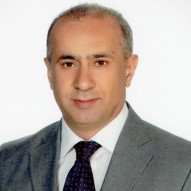Advances of Heat Transfer in Porous Media
A special issue of Energies (ISSN 1996-1073). This special issue belongs to the section "J1: Heat and Mass Transfer".
Deadline for manuscript submissions: closed (30 September 2022) | Viewed by 18772
Special Issue Editors
Interests: thermal energy storage; heat and fluid flow in porous media; enhancement of heat transfer and computational heat transfer
Special Issues, Collections and Topics in MDPI journals
Interests: melting; microchannel; carbon dioxide; acids; periodic structures; parameter design; phase change materials; cooling
Special Issues, Collections and Topics in MDPI journals
Special Issue Information
Dear Colleagues,
Heat, fluid, and mass transfer in porous media has been one of the hottest topics in recent years. There are plenty of natural and artificial porous media whose structures and thermophysical properties are completely different. Heat and fluid flow in each porous medium has its own character, and this forces researchers to do endless investigations on porous media and develop new and innovative methods for experimental and theoretical researches.
The aim of this Special Issue on “Advances of Heat Transfer in Porous Media” is to collect recent studies and provide a valuable source of information for researchers in this field. This Special Issue covers original and innovative research and studies. Research on heat transfer enhancement by porous media, phase change in porous media, volume average and pore scale studies of heat and fluid flow in porous media, determination of thermophysical properties, reaction and adsorption in porous media, and nanofluids in porous media is welcomed. The aim of the editors is to provide not only peer review of the submitted paper but also give useful comments to the authors for their future studies. Editors invite you to submit your interesting and original studies to this Special Issue, and we look forward to receiving your valuable papers.
Assoc. Prof. Moghtada Mobedi
Prof. Dr. Kamel Hooman
Guest Editors
Manuscript Submission Information
Manuscripts should be submitted online at www.mdpi.com by registering and logging in to this website. Once you are registered, click here to go to the submission form. Manuscripts can be submitted until the deadline. All submissions that pass pre-check are peer-reviewed. Accepted papers will be published continuously in the journal (as soon as accepted) and will be listed together on the special issue website. Research articles, review articles as well as short communications are invited. For planned papers, a title and short abstract (about 100 words) can be sent to the Editorial Office for announcement on this website.
Submitted manuscripts should not have been published previously, nor be under consideration for publication elsewhere (except conference proceedings papers). All manuscripts are thoroughly refereed through a single-blind peer-review process. A guide for authors and other relevant information for submission of manuscripts is available on the Instructions for Authors page. Energies is an international peer-reviewed open access semimonthly journal published by MDPI.
Please visit the Instructions for Authors page before submitting a manuscript. The Article Processing Charge (APC) for publication in this open access journal is 2600 CHF (Swiss Francs). Submitted papers should be well formatted and use good English. Authors may use MDPI's English editing service prior to publication or during author revisions.
Keywords
- Heat and fluid flow in porous media
- Mass transfer in porous media
- Heat transfer enhancement by porous media
- Adsorption and its applications
- Phase change in porous media
- Thermophysical properties of porous media
- Heat transfer in metal foams and 3D lattice metal frames
- Heat and mass transport in packed bed reactors
- Drying in porous materials







